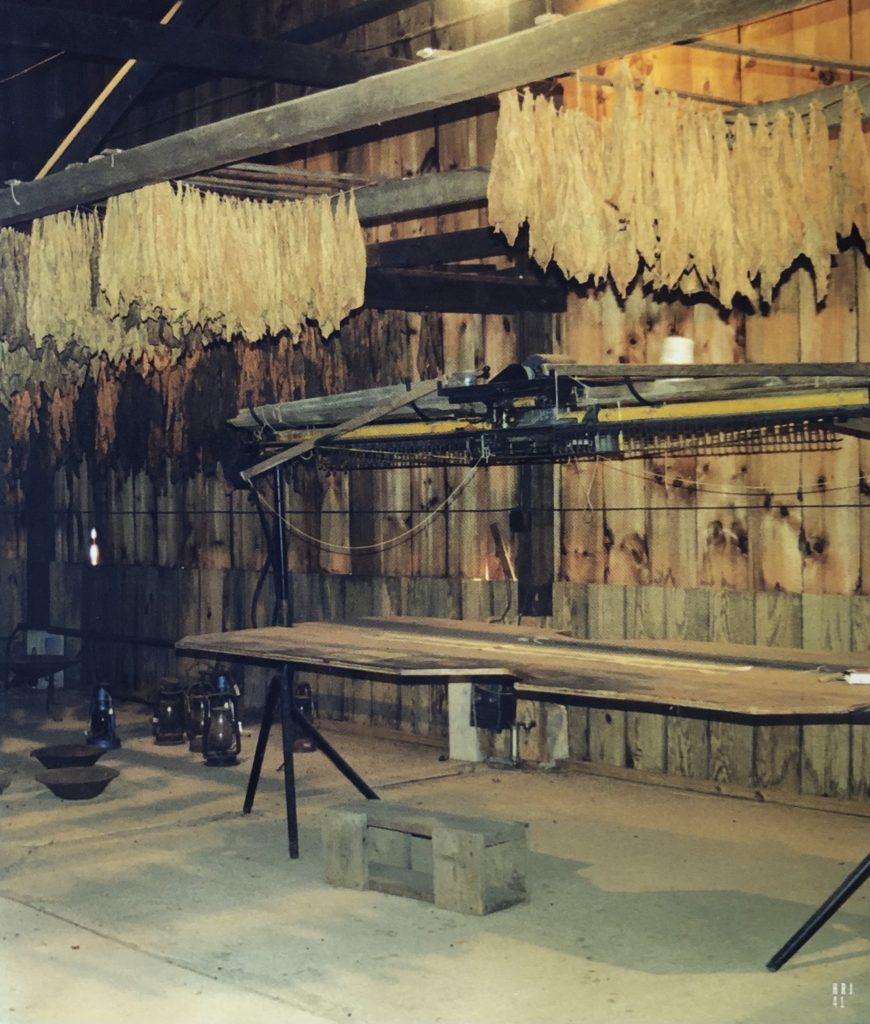By Cynthia Cormier
(c) Connecticut Explored Inc. May/Jun/Jul 2004
Subscribe/Buy the Issue!
Shade-grown tobacco leaf from the Connecticut River Valley has long been recognized as the finest cigar wrapper in the world. If you grew up anywhere in the region chances are you or someone you knew “worked tobacco.” Some, as students, worked over their summer breaks. Others made farming their full-time occupation. To meet the demands of this labor-intensive crop, help also came from as far away as Florida, Puerto Rico, and Jamaica. Each season, migrant workers supplied the extra people power needed to plant, water, weed, pick, and dry the broad and shade leaf tobacco. [See “Tobacco Valley: Puerto Rican Farm Workers in Connecticut,” Fall 2002, “Laboring in the Shade,” and “I was a Pennsy Girl,” Summer 2011.]
The history of the area’s cigar tobacco industry stretches back to the early 1800s, but the culture of work and life associated with it are slowly disappearing. At its peak, in 1921, cigar tobacco agriculture in Connecticut commanded 30,500 acres. Today, only 2,000 acres are planted with the crop. The twin tasks of preserving and telling the industry’s rich, still evolving story have been undertaken by the Luddy/Taylor Connecticut Valley Tobacco Museum. Located in Windsor’s Northwest Park, the museum opened in 1992, thanks to an earlier bequest to the town by John E. Luddy, who made his fortune in the tobacco industry, and the efforts of retired agricultural scientist Gordon S. Taylor.
The museum’s collection is housed in two buildings. In the Luddy Archives, photographs, newspaper clippings, simple tools, and a video document the work done by those who toiled not only in the local tobacco fields and barns but also in the offshore facilities where the finished cigars are now largely produced. The Taylor building, a remodeled tobacco curing barn, is filled with farming equipment. Arranged to give visitors a start-to-finish glimpse into the tobacco growing process, all of the machinery was actually used and some of it is over 100 years old. The artifacts include a steam boiler (used to purify the seedbeds), a transplanter (designed to move seedlings, which are grown under glass, to the fields as they mature), and a disc harrow (used after plowing to further ready the soil). The barn’s rustic interior, complete with shade netting and tobacco leaves, will definitely take you back to earlier times if you’ve ever worked tobacco.
Visitors to the museum should also allow time to explore Northwest Park. Made up of former tobacco fields, the 473-acre park borders the Rainbow Reservoir and features walking trails, a nature center, and other attractions.
Cynthia Cormier is Director of Education and Curatorial Services at Hill-Stead Museum and chairs HRJ’s editorial board.
Explore!
The Luddy/Taylor Connecticut Valley Tobacco Museum
135 Lang Road, Windsor
The museum is open Thursday, Friday, and Saturday from mid-March through mid-December. Please check for current information about visiting at tobaccohistsoc.org.
“Tobacco Valley: Puerto Rican Farm Workers in Connecticut,” Fall 2002
“Laboring in the Shade,” and “I was a Pennsy Girl,” Summer 2011

